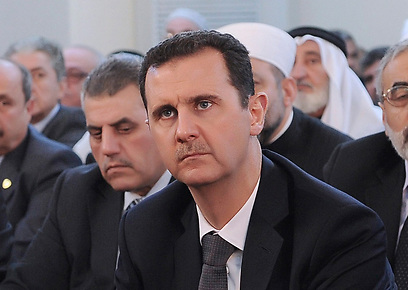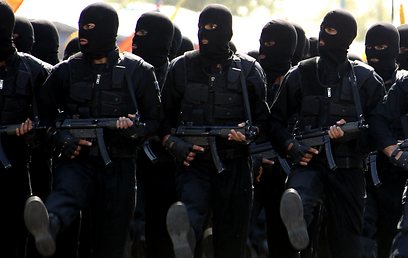
Report: Iran building militias in Syria in case Assad falls
Experts tell Washington Post Tehran, Hezbollah sending weapons, cash to proxy groups to preserve supply routes to Lebanon
Iran and its Lebanese proxy Hezbollah are building a network of militias inside Syria to protect their interests in the event that President Bashar regime collapses or is forced to withdraw from Damascus, the Washington Post reported, citing US and Middle Eastern officials.
"It's a big operation," a senior Obama administration official was quoted as saying by the newspaper. "The immediate intention seems to be to support the Syrian regime. But it's important for Iran to have a force in Syria that is reliable and can be counted on."
Related stories:
- IDF says calm on Syria border 'deceptive'
- A different Middle East: Israelis for Syria
- Op-ed: When will the world finally act?
A senior Arab official told The Washington Post that Iran’s strategy has two tracks: "One is to support Assad to the hilt, the other is to set the stage for major mischief if he collapses."
Western, Israeli and Middle Eastern elements have expressed growing concern over the possibility of Syria's fragmentation along tribal or religious lines and over the lack of unity among the Syrian opposition.

'Major mischief if he collapses.' Bashar Assad (Photo: Reuters)
According to the Washington Post, the militias set up by Iran and Hezbollah are fighting alongside Syrian government forces to keep Assad in power. However, the report said, officials believe Tehran's long-term goal is to have reliable operatives in place in the event that Syria fractures into separate ethnic and sectarian enclaves.
Each of Syria's internal actors has external backers, The Washington Post stressed in its report.

Iranian soldiers during military parade in Tehran (Photo: AFP)
According to the report, Tehran's interest in preserving a Syrian base partly explains why the financially strapped Iranian government continues to send weapons and cash to groups such as Jaysh al-Sha'bi, an alliance of local Shiite and Alawite militias.
American and Middle Eastern officials who have studied the organization told the Washington Post that Jaysh fighters are predominantly a sectarian fighting force supervised by Iranian and Hezbollah commanders.
"Jaysh is essentially an Iran-Hezbollah joint venture," David Cohen, under secretary for terrorism and financial intelligence at the Treasury Department, told the newspaper. "Given the other constraints on Iranian resources right now, it's obvious that this is an important proxy group for them."
The Treasury Department said Iran had provided it with "routine funding worth millions of dollars."
A Treasury statement noted that Iran's Revolutionary Guard commander has said that Jaysh was "modeled after Iran’s own Basij, a paramilitary force subordinate to (Iran's Revolutionary Guard Corps) that has been heavily involved in the violent crackdowns and serious human rights abuses occurring in Iran since the June 2009 contested presidential election."
Experts told The Washington Post that Iran is less interested in preserving Assad in power than in maintaining levers of power, including transport hubs inside Syria. As long as Tehran could maintain control of an air or seaport, they could also maintain a Hezbollah-controlled supply route into Lebanon and continue to manipulate Lebanese politics, the experts argued.










